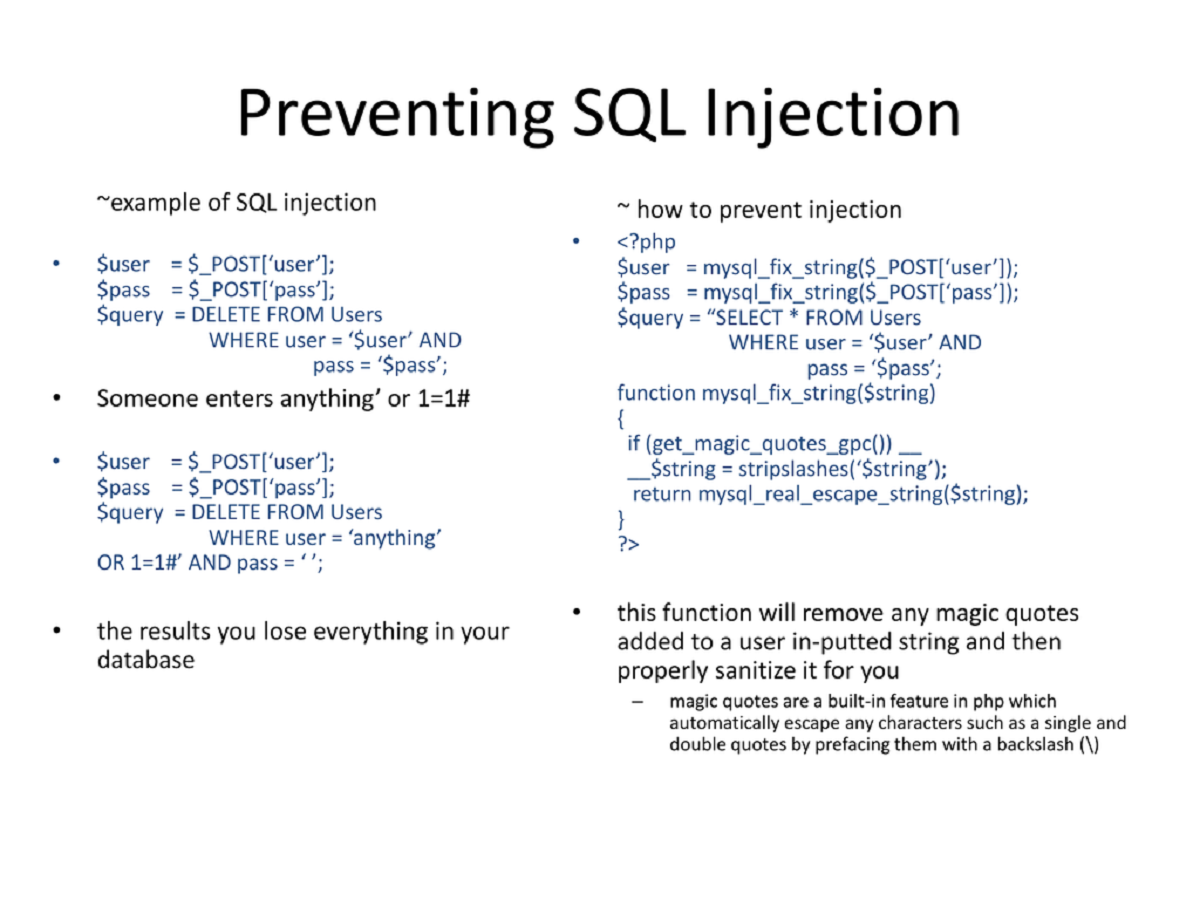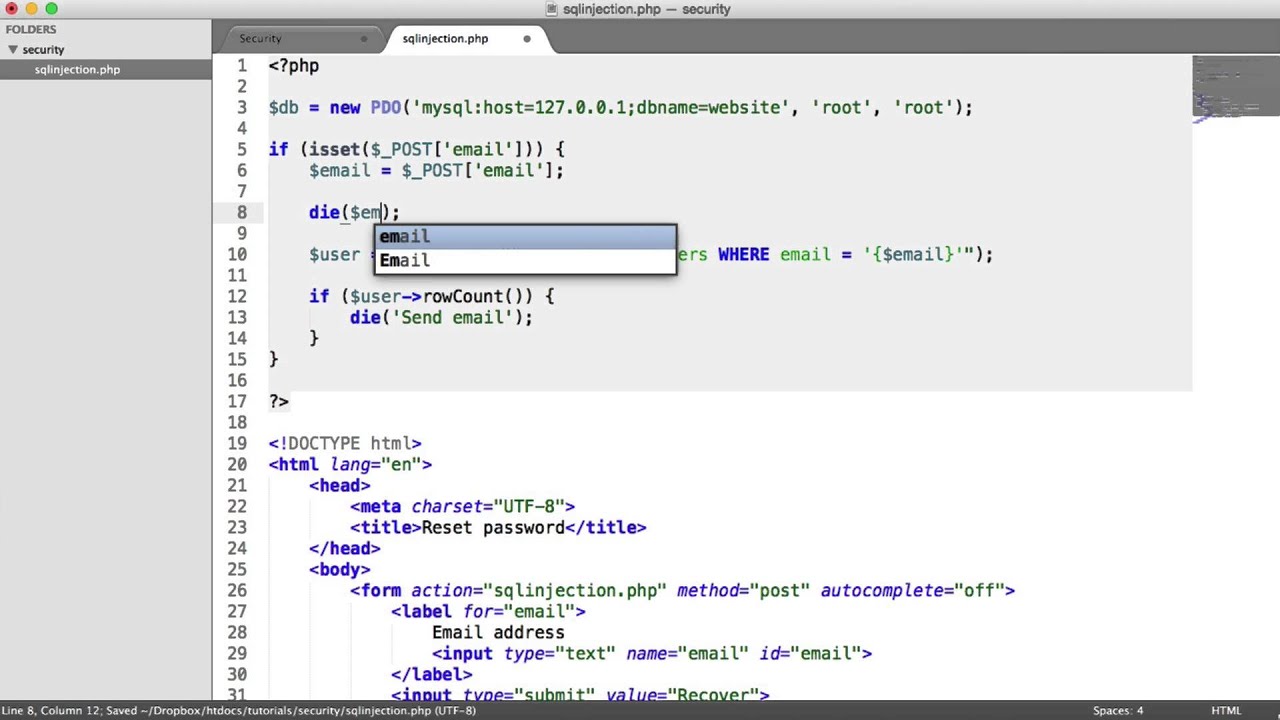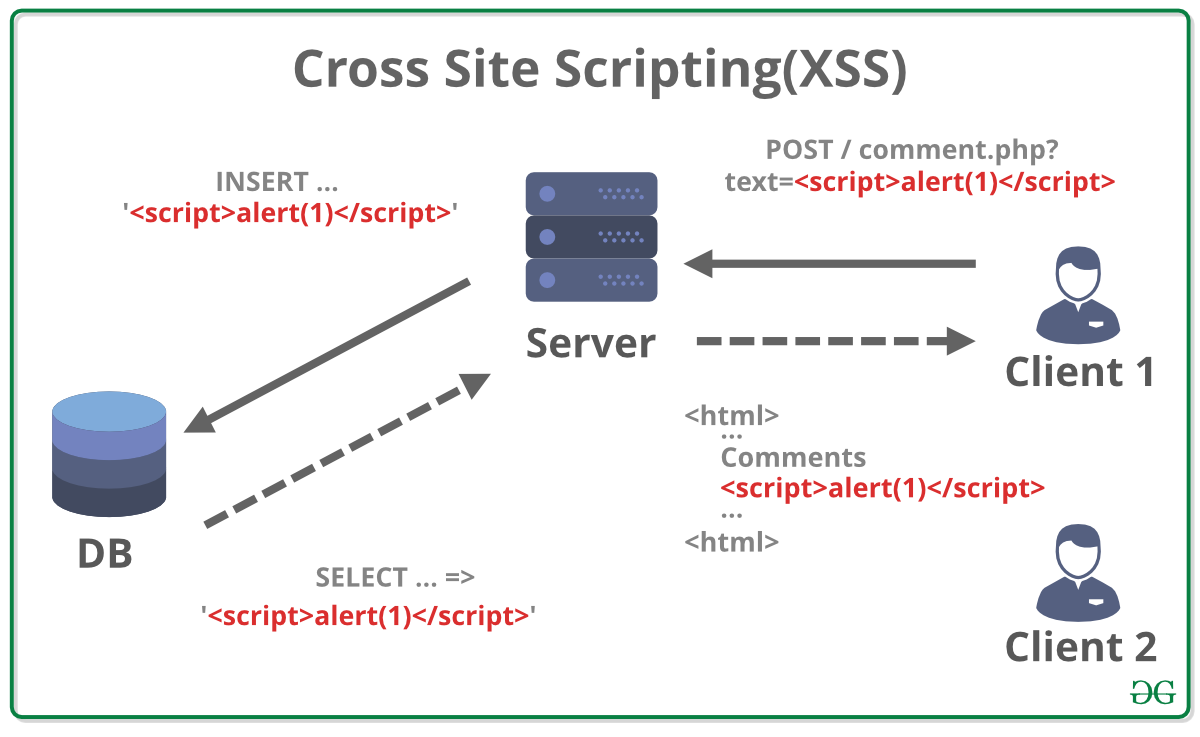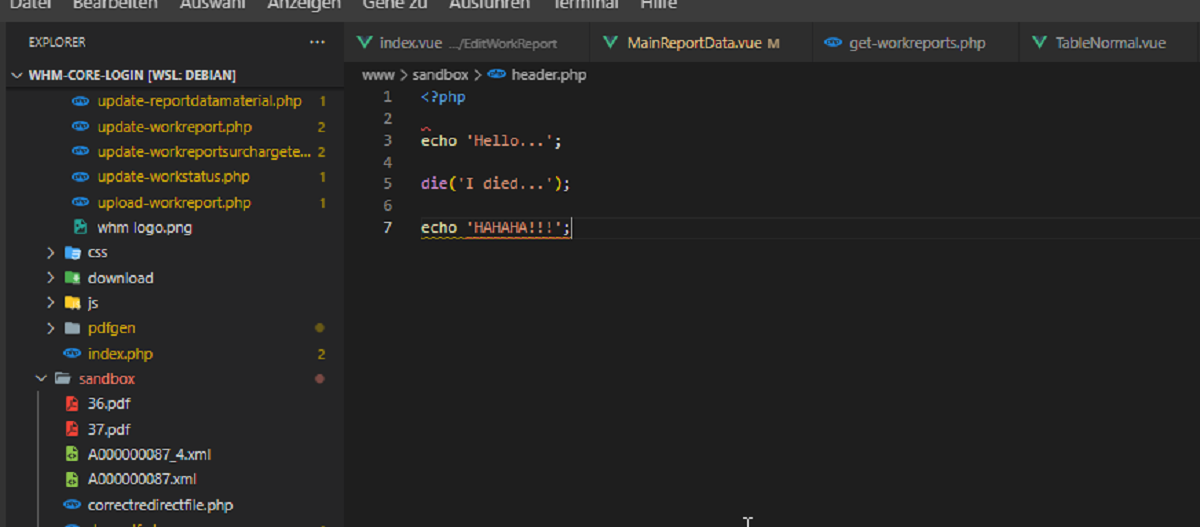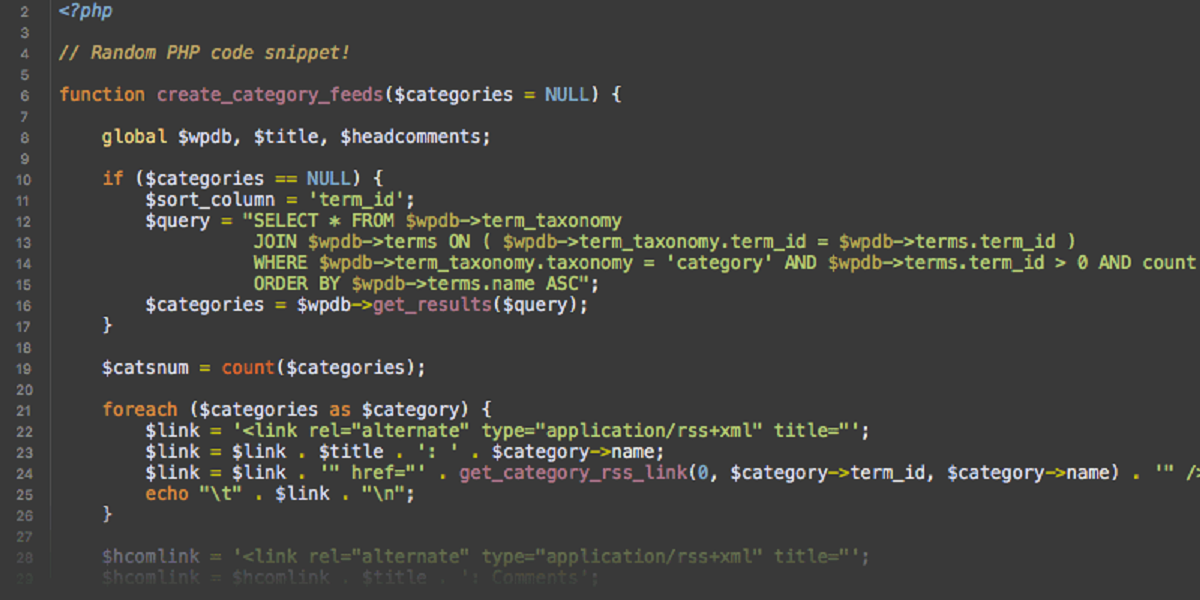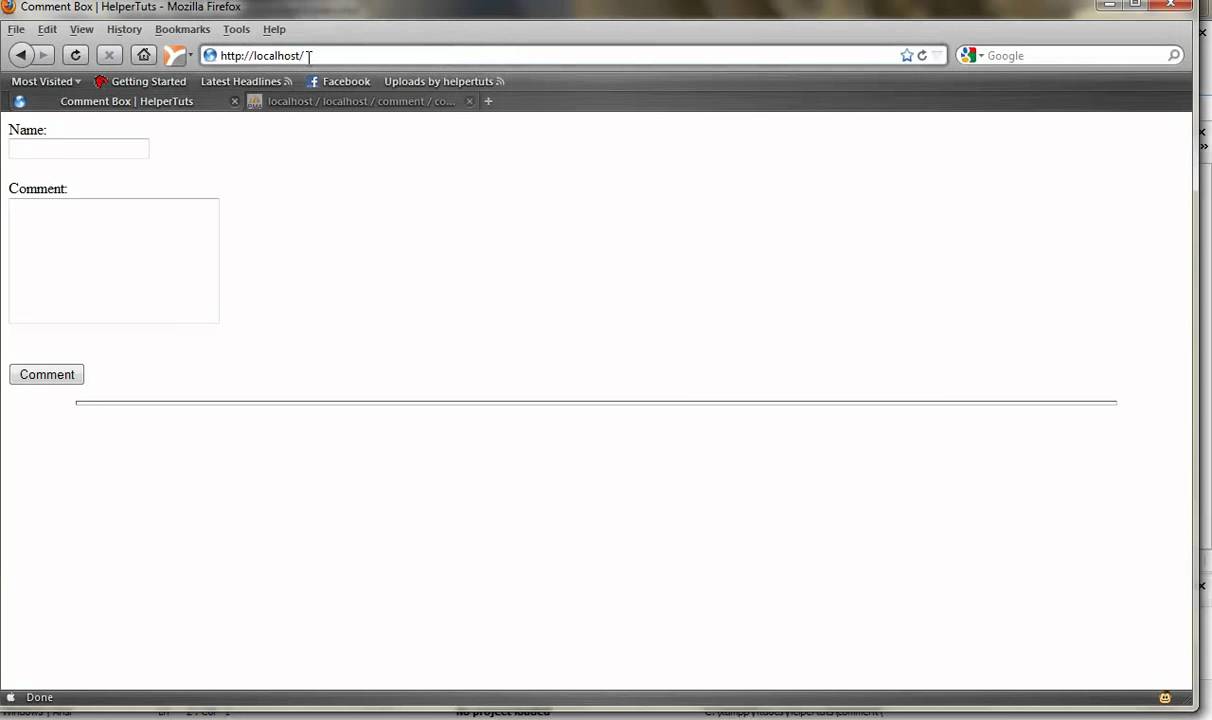Introduction
Welcome to our comprehensive guide on preventing SQL injections in PHP. As a skilled PHP developer, you are well aware that security is one of the most critical aspects when it comes to building any web application. SQL injection is a common vulnerability that can compromise the integrity and security of your data. In this guide, we will delve into what SQL injection is, the risks associated with it, and most importantly, how to prevent it in your PHP applications.
SQL injection is a technique that cyber attackers commonly use to exploit vulnerabilities in web applications. By manipulating input fields or parameters, attackers can inject malicious SQL code into a web application’s database queries. This can lead to unauthorized access to sensitive information, data loss, or even a complete compromise of the application.
The risks associated with SQL injection attacks are significant. Attackers can gain access to databases containing personal user information, such as usernames, passwords, and financial data. They can also manipulate or delete data, disrupt business operations, and even infiltrate the underlying server infrastructure.
Preventing SQL injections in PHP is crucial to ensure the safety and integrity of your web applications. Fortunately, PHP offers various techniques and best practices to mitigate the risks of SQL injection attacks. In the following sections, we will explore some of these techniques in detail.
It’s important to note that while we will focus specifically on PHP in this guide, the principles and best practices can generally be applied to other programming languages and frameworks as well. So, without further ado, let’s dive into the world of SQL injections and learn how to protect our PHP applications from this common security threat.
What is SQL Injection?
SQL injection is a security vulnerability that occurs when an attacker can manipulate the input of a web application to execute malicious SQL commands. It is considered one of the most common and dangerous attack techniques targeting web applications that rely on SQL databases.
Web applications typically interact with databases by executing SQL queries to retrieve, insert, update, or delete data. These queries are constructed using user input, such as form submissions or URL parameters. In a properly secured application, user input is validated and sanitized before it is used in SQL queries. However, if a web application fails to properly sanitize user input, it becomes susceptible to SQL injection attacks.
During an SQL injection attack, an attacker manipulates the input fields or parameters of a web application to inject malicious SQL code into the application’s database query. A successful SQL injection attack can bypass authentication mechanisms, extract sensitive information, modify or delete data, or even gain control over the entire database server.
Attackers exploit SQL injection vulnerabilities by taking advantage of poorly constructed or unsanitized queries. One common method is by inserting malicious SQL statements into user input fields that are not properly escaped. For example, consider a login form where a user enters their username and password. If the application fails to sanitize the input, an attacker can input a malicious username that includes SQL commands, such as ‘ OR ‘1’=’1′. This can essentially bypass the authentication check and grant the attacker unauthorized access to the system.
SQL injection attacks can have severe consequences, including data breaches, financial loss, compromised user accounts, and damage to a company’s reputation. Therefore, it is crucial for developers to understand the risks associated with SQL injection and implement proper security measures to prevent it.
Understanding the Risks of SQL Injection
SQL injection poses significant risks to the security and integrity of web applications and databases. It is important for developers to have a comprehensive understanding of these risks in order to effectively prevent and mitigate SQL injection attacks.
One of the primary risks of SQL injection is unauthorized access to sensitive information. By exploiting vulnerabilities in a web application, attackers can gain access to databases containing personal and confidential user data. This can include usernames, passwords, email addresses, financial information, and other personally identifiable information. Once this sensitive data is compromised, it can be used for various malicious activities such as identity theft, fraud, or unauthorized account access.
Furthermore, SQL injection can also lead to data manipulation or even complete data loss. Attackers can execute malicious SQL queries that modify, delete, or corrupt data within the database. This can have detrimental consequences for businesses, as it can lead to financial loss, disruption of operations, and damage to the company’s reputation. Additionally, if an attacker gains control over the underlying database server, they can potentially tamper with the entire system, affecting multiple applications and users.
Another risk associated with SQL injection is the potential for privilege escalation. If an attacker successfully injects malicious SQL code, they may be able to escalate their privileges within the application or database. This means they can gain administrative access, granting them the ability to perform actions reserved only for authorized personnel. Privilege escalation can result in unauthorized modification of application settings, database structures, or access to other sensitive information.
Furthermore, SQL injection attacks can also open the door to other types of security threats. Attackers can use SQL injection as a stepping stone to launch other attacks, such as cross-site scripting (XSS) or remote code execution. This can lead to further compromise of the system and enable additional malicious activities.
Overall, the risks associated with SQL injection are substantial and can have far-reaching consequences for businesses and individuals alike. It is crucial for developers to be proactive in implementing preventive measures to ensure the security and integrity of their web applications and databases.
Preventing SQL Injections in PHP
Preventing SQL injections is of paramount importance when developing PHP applications. By implementing best practices and following proper security measures, you can significantly reduce the risk of SQL injection vulnerabilities. Here are some effective strategies to prevent SQL injections in PHP:
- Use Prepared Statements: Prepared statements are a powerful way to prevent SQL injection. Instead of concatenating user input into SQL queries, prepared statements use placeholders for user input. These placeholders are then bound to the actual user input, ensuring that the data is properly sanitized before it is executed as part of the query.
- Sanitize User Input: Always sanitize user input before using it in SQL queries. PHP provides various functions, such as
mysqli_real_escape_string()or parameterized queries, to sanitize input by escaping special characters. However, it is recommended to use prepared statements as they provide a more robust and secure approach. - Implement Proper Error Handling: Error messages that reveal sensitive information about your database schema, table names, or column names can provide valuable information to potential attackers. Make sure to handle errors properly and display generic error messages to users while logging detailed errors for developers.
- Use Parameterized Queries: Parameterized queries ensure that user input is separated from the query structure. By binding parameters to the query separately, you eliminate the risk of malicious input affecting the SQL syntax. PHP MySQLi and PDO provide support for parameterized queries.
- Limit Permissions and Privileges: Always follow the principle of least privilege. Create separate database accounts with restricted permissions for different parts of your application. This ensures that even if an SQL injection occurs, the attacker’s access will be limited to only certain areas of the database.
- Regularly Update and Patch SQL Server: Keep your database server updated with the latest security patches and updates. Vulnerabilities can arise in the database software itself, so staying up to date is crucial for maintaining a secure environment.
By incorporating these preventive measures into your PHP development process, you can greatly mitigate the risk of SQL injection vulnerabilities. It is important to stay vigilant and regularly review and test your code for any potential vulnerabilities. With a proactive approach to security, you can ensure the integrity and safety of your PHP applications.
Use Prepared Statements
Prepared statements are a highly effective technique to prevent SQL injection attacks in PHP. By using prepared statements, you can separate the SQL code from the user input, ensuring that the input is properly sanitized and validated before executing the query.
Prepared statements work by first preparing the SQL query, which includes placeholders for the user input. These placeholders are represented by question marks or named parameters. Then, you bind the actual user input values to these placeholders, which ensures that the input is treated as data rather than executable code.
When a prepared statement is executed, the database server pre-compiles the SQL query, optimizing its execution. The input values are passed separately from the query, making it impossible for an attacker to inject malicious code into the query.
To use prepared statements in PHP, you can use either the MySQLi extension or the PDO (PHP Data Objects) extension. Both extensions provide support for prepared statements in PHP.
Here’s an example of using prepared statements with MySQLi:
// Create a prepared statement
$stmt = $conn->prepare("SELECT * FROM users WHERE username = ? AND password = ?");
// Bind parameters to the prepared statement
$stmt->bind_param("ss", $username, $password);
// Set the values of the parameters
$username = $_POST['username'];
$password = $_POST['password'];
// Execute the prepared statement
$stmt->execute();
// Process the results...
In the above example, the placeholders “?” represent the parameters in the SQL query. The bind_param() function binds the actual values to these parameters, ensuring they are properly sanitized. By separating the user input from the SQL code, we eliminate the risk of SQL injection.
Prepared statements not only protect against SQL injection, but they also provide additional benefits such as improved performance and better code readability. It is highly recommended to utilize prepared statements whenever possible when working with user input in your PHP applications.
Sanitize User Input
Sanitizing user input is a crucial step in preventing SQL injection attacks in PHP. It involves removing or escaping any special characters or malicious code from user input before using it in SQL queries.
PHP provides built-in functions, such as mysqli_real_escape_string() and htmlspecialchars(), to sanitize user input. These functions can be used to escape special characters that have a meaning in SQL queries or to prevent cross-site scripting (XSS) attacks by converting special characters into their HTML entities.
When sanitizing user input, different approaches can be taken depending on the context. For SQL queries, escaping special characters is crucial to prevent SQL injection. The mysqli_real_escape_string() function in the MySQLi extension can be used to achieve this. For example:
$username = mysqli_real_escape_string($conn, $_POST['username']);
$password = mysqli_real_escape_string($conn, $_POST['password']);
In the above example, the mysqli_real_escape_string() function is used to escape any special characters that may be included in the username and password inputs. This ensures that the input is treated as data rather than executable code.
It is important to note that while sanitizing user input is an essential step, it should not be the sole method of preventing SQL injection. It is always recommended to use prepared statements as the primary defense against SQL injection, as they provide a more robust and secure approach.
In addition to sanitizing user input for SQL queries, it is also important to consider other types of input validation and sanitization. For example, when displaying user-generated content on web pages, it is crucial to sanitize the input to prevent cross-site scripting (XSS) attacks. The htmlspecialchars() function can be used to convert special characters into their HTML entities, preventing them from being interpreted as code.
Here’s an example of using htmlspecialchars() to sanitize user input for output:
$name = htmlspecialchars($_POST['name']);
In the above example, the htmlspecialchars() function is used to convert any special characters that may be included in the name input into their HTML entities. This ensures that the input is displayed as plain text and prevents any potentially malicious code from being executed.
By properly sanitizing user input in PHP, you can significantly reduce the risk of SQL injection and other security vulnerabilities. However, it is important to remember that sanitization should always be used in conjunction with other preventive techniques, such as prepared statements, to ensure comprehensive security.
Implement Proper Error Handling
Implementing proper error handling is a crucial aspect of preventing SQL injection attacks in PHP. Error messages can provide valuable information to potential attackers, revealing details about the underlying database structure, table names, or column names. By handling errors appropriately, you can minimize the risk of exposing sensitive information and help protect your application.
When displaying errors to users, it is important to provide generic error messages that do not disclose specific details about the database or the error itself. For example, instead of displaying a message like “Invalid username or password,” you can simply display a generic message like “Invalid credentials.”
However, it is equally important to log detailed error messages for developers and administrators to analyze and troubleshoot issues. These error logs should contain relevant information, such as the time of the error, the affected query, and any related information that can help in identifying and resolving the issue.
PHP provides various error handling mechanisms that can be used to manage and handle errors effectively. The error_reporting directive in the PHP configuration is used to define the level of error reporting. It is recommended to set this directive to a strict level, such as E_ALL, during the development phase to ensure all errors are captured and addressed.
Additionally, the display_errors directive should be set to false in production environments to prevent error messages from being displayed to users. Instead, errors should be logged and appropriate error pages should be displayed to users.
By implementing proper error handling, you can protect your application from revealing sensitive information and provide a more secure and user-friendly experience for your users.
Use Parameterized Queries
Using parameterized queries is a strong defense against SQL injection attacks in PHP. Parameterized queries ensure that user input is separated from the SQL query itself, eliminating the risk of malicious code being injected into the query.
A parameterized query, also known as a prepared statement, works by defining placeholders for the input values in the SQL query. These placeholders can be represented by question marks or named parameters. The actual values are then bound to these placeholders separately, ensuring that the input is treated as data and not executable code.
PHP provides two commonly used extensions, MySQLi and PDO (PHP Data Objects), that offer support for parameterized queries.
Here’s an example of using a parameterized query with MySQLi:
// Prepare the query with placeholders
$query = "SELECT * FROM users WHERE username = ? AND password = ?";
// Prepare statement
$stmt = $conn->prepare($query);
// Bind parameters to the prepared statement
$stmt->bind_param("ss", $username, $password);
// Set the values of the parameters
$username = $_POST['username'];
$password = $_POST['password'];
// Execute the prepared statement
$stmt->execute();
// Process the results...
In the above example, the question marks in the SQL query act as placeholders for the input values. The bind_param() function binds the actual values to these placeholders, ensuring they are properly sanitized and preventing SQL injection.
Parameterized queries offer several benefits over traditional querying methods. Apart from preventing SQL injection, they can also improve performance as the database server can reuse the prepared statement for subsequent executions. This eliminates the need for the server to parse and compile the statement every time it is executed.
Parameterized queries are also more readable and maintainable since the statement structure is clearly separated from the input values. It enhances code clarity and reduces the potential for syntactical errors.
It’s important to note that the usage of parameterized queries may slightly differ depending on the specific extension or database system being used. In addition, care should be taken to ensure that all input values are bound to the correct data types to avoid type mismatches and inconsistencies.
By leveraging parameterized queries, you can effectively protect your PHP application from SQL injection attacks and ensure the security of your database and user data.
Limit Permissions and Privileges
Another crucial measure to prevent SQL injection attacks in PHP is to limit the permissions and privileges of database accounts. By following the principle of least privilege, you can minimize the potential damage that can be caused in the event of a successful SQL injection attack.
When setting up the database and user accounts, it is important to assign the minimum necessary permissions to each account. Separating user accounts based on their specific roles and responsibilities helps to limit the scope of an attack. For example, an application that only needs to perform SELECT queries should not have unnecessary INSERT, UPDATE, or DELETE privileges.
By creating separate user accounts with limited permissions, you can ensure that even if an SQL injection occurs, the attacker’s access will be restricted to only the resources and capabilities granted to that specific account.
In addition to limiting permissions, it is also essential to restrict access to sensitive information such as database credentials. Storing credentials securely, such as in environment variables or encrypted configuration files, helps to prevent unauthorized access to the database and mitigate the risk of data breaches.
Regularly reviewing and auditing the permissions and privileges of your database accounts is also crucial. It is recommended to conduct periodic assessments to ensure that permissions are still relevant and necessary. Revoking unnecessary privileges and frequently updating permissions based on changes in roles or responsibilities helps to strengthen the security of your application.
Furthermore, it is important to consider implementing appropriate network security measures to protect the database server. This includes using firewalls, strong access controls, and encrypting data during transit. Limiting the exposure of the database server to the public internet through network configuration further reduces the risk of unauthorized access.
By limiting permissions and privileges, you can minimize the potential damage that can occur in the event of a SQL injection attack. It helps to create strong barriers and confines the potential impact to a specific user account or portion of the database, enhancing the overall security of your PHP application.
Regularly Update and Patch SQL Server
Regularly updating and patching your SQL Server is a critical step in preventing SQL injection attacks in PHP. The database server itself can have vulnerabilities that attackers may exploit to gain unauthorized access or manipulate data.
SQL Server vendors frequently release updates, patches, and security fixes to address known vulnerabilities and improve the overall security of the software. By regularly updating your SQL Server, you can ensure that any identified security loopholes are patched promptly.
Here are some key reasons why regular updates and patches are crucial:
Addressing Security Vulnerabilities: Updates and patches often include fixes for security vulnerabilities discovered in the SQL Server. Failing to apply these updates can make your database susceptible to known attacks and increase the risk of successful SQL injection attempts.
Improving Stability and Performance: Updates not only focus on security but also include enhancements to the stability and performance of the SQL Server. By keeping your server up to date, you can benefit from bug fixes and performance optimizations, resulting in a more reliable and efficient database system.
Keeping abreast of Industry Best Practices: SQL Server updates often incorporate new features and functionalities that align with industry best practices and standards. Staying up to date with these updates ensures that your database maintains compatibility with the latest security protocols and requirements.
It is recommended to establish a regular update schedule and monitor for new releases from your SQL Server vendor. Keep in mind that updates may require careful planning and testing, especially in production environments, to ensure compatibility with your applications and avoid any potential disruptions.
In addition to updating the SQL Server software, it’s also important to regularly patch the underlying operating system and any related software components. This includes applying security patches and updates to the web server, PHP, and other technologies used in your application stack. A holistic approach to patch management helps to maintain a secure and robust environment for your PHP application.
By staying proactive with updates and patching, you can significantly reduce the risk of SQL injection attacks and ensure the security and stability of your SQL Server and the applications it supports.
Conclusion
Preventing SQL injection attacks is crucial for maintaining the security and integrity of PHP applications that interact with databases. By implementing best practices and following proper security measures, you can greatly reduce the risk of SQL injection vulnerabilities.
In this guide, we explored several effective strategies for preventing SQL injection in PHP. Using prepared statements is a powerful technique that separates user input from the SQL query, ensuring proper sanitization and protection against injection attacks.
Sanitizing user input is another essential step in preventing SQL injection. By removing or escaping special characters and validating input, you can prevent malicious code from being executed in SQL queries or on web pages.
Proper error handling is critical in minimizing the risk of exposing sensitive information. By providing generic error messages to users and logging detailed errors for developers, you can protect your application and assist in troubleshooting potential issues.
Using parameterized queries and limiting permissions and privileges are additional preventive measures. Parameterized queries separate data from the query structure, while limiting permissions ensures that each user account has the least necessary privileges, reducing the potential impact of an attack.
Regularly updating and patching the SQL Server, along with related software components, helps to address known vulnerabilities and maintain a secure environment for your application.
By incorporating these preventive measures into your PHP development process, you can significantly strengthen the security of your applications and protect against SQL injection attacks. It is essential to remain vigilant, stay up to date with best practices, and continually review and test your code for potential vulnerabilities to ensure the ongoing security of your PHP applications.







